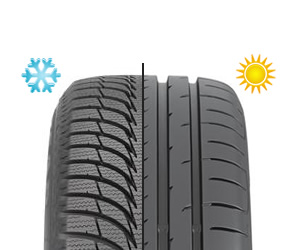Driving during the winter months is the most likely to test the mettle of any motorist. Cold temperatures and sleet or snow will all have an effect on your driving safety and your vehicle. Here we have a few tips and suggestions to keep you safe during those months.
Preparing Your Car
 Cold temperatures outside have a negative effect on your car. Water based fluid like coolants and screenwash all risk freezing up and damaging your engine, whilst metal and rubber contracts slightly which can cause leaks in connections. Here is a checklist of things to keep an eye on:
Cold temperatures outside have a negative effect on your car. Water based fluid like coolants and screenwash all risk freezing up and damaging your engine, whilst metal and rubber contracts slightly which can cause leaks in connections. Here is a checklist of things to keep an eye on:
- Check your coolant. Normally this is topped up with antifreeze during your regular service.
- Check screenwash. Top up with screenwash fluid.
- Keep an eye out for any strange leaks under your engine. Have a look each time you drive.
- Make sure you have enough tread depth on your tyres.
- Consider fitting winter tyres. Proven to be better once the temperature drops below 7 °C.
Boot Essentials
It’s always handy to keep a few extra items in the boot of your car, in case of winter emergencies:
- Wndscreen scraper, de-icer spray.
- Snow shovel
- Jump leads. Car batteries are more likely to have problems during the winter months.
- Tow rope and length of polypropylene rope.
- Spare warm clothing and a blanket, in case you break down or are stranded.
- Torch, candle, and matches. If you burn a candle in your car be sure to only do it for 30 minutes or so as it may burn up the oxygen!
- Car charger for your mobile phone.
Why Bother With Winter Tyres?
Although you may not live in a cold nordic country, winters in the UK normally have a few days of snow and quite a lot of icy mornings. Unless you live very rurally, snow chains may well be overkill as they are designed for deep snow where you will not make contact with the road surface. Snow socks are becoming more popular and are useful, but can be a pain to install and can shred up once they contact bare tarmac.
Increasingly though, winter tyres are being used (a legal requirement in many European countries) to aid in cold driving safety in this country. Also know as M+S (Mud & Snow) they have increased treads designed for pulling through snow and mud, and their rubber composition is softer to make sure they are still functional at low and freezing temperatures. Tests have shown that they really do increase grip, reduce aquaplaning and reduce stopping distances.
